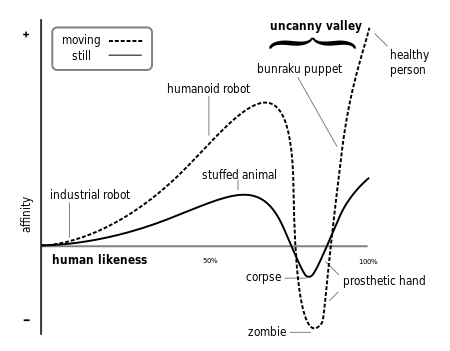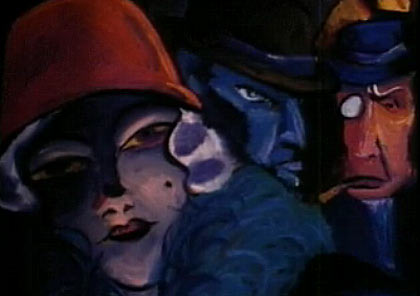Consoles, computers and screens are getting bigger and better each day, so, games and animations are going to evolve along side them, but, what form will they take?
Visuals will of course be enhanced with the possible crossing of the uncanny valley. So one of the possible enhancement will probably be the achievement in photorealism in animations and in games. Photorealism in animation may not serve any other purpose than technical achievement (since we can use camera to film live action footage instead of spending time animating and composing sequences), with maybe the added bonus that one day photorealistic animation might be cheaper than live action. Games on the other hand would greatly benefit from photorealism, bringing the player closer to total submergence.
New technology such as motion controllers, cameras with motion tracking systems and 3D screens are already widely used. In time I believe they will be perfected so that they become the "norm". Taking them a step further, we might see 3D headgear or 3D glasses that allow people to feel like they are walking through the gaming environment. Prototypes already exist but the finished product is a long way away.
Gloves fitted with motion capture systems as well as special controls to immerse the player fully might make him or her feel like they are actually wielding the sword/dealing blows/ casting spells or interacting with characters or objects from the game (for example: thermal controls that make the gloves cold could make the wearer feel like they are trapped in a blizzard; vibrations or small electric shocks will make them feel like they are touching things, casting magic, hitting things, etc). The gloves, combined with a 3D visor would help the gamer feel submerged.The technology for these things already exist, so it's just a matter of time. But, what about sound? Smell? Taste?
Taking things a step further I can imagine a cylindrical room/chamber, small enough to fit in any room of your house/apartment, but big enough for one or two fully grown adults to fit in with enough oom for movement. The walls would act as a screen displaying a 360 degree 3D view of the gaming environment. Scents could then be used inside the chamber (pine, flower and grass for woods for example). A surround-sound system would solve the noise problem, with the room canceling out all external sounds. Taste would be difficult to replicate, but, since most games do not require you to taste things in-game, this wouldn't be a problem. But if need be, one could use sprays with different tastes:
The gamer would theoretically be able to interact with the game as if he is in the real world. Of course, the room would have to be ventilated so that you won't die from lack of oxygen or from pungent odours (from the scents mixing). Then there's also the fact that the gamer would have to remain standing for long periods of time thus he'd become fatigued. Though that would force the gamer to exercise (on of the downsides of gaming most parents seem to point out). But then, we'd eliminate the need to go outside and exercise. In a Second Life scenario people could end up living as their game counterparts, interacting in an ideal world, but that again could go both ways. As a means of entertainment it's ok but some people will fo over board and will refuse to go outside and interact with the real world ( some people do that now with our "limited" technology).
As far as animation goes, an open ended or interactive narrative might be the future. Using the same "game room"/ "screen room" we can imerge ourselves and interact with the animation.
Perhaps different screens that can be bended into different shapes/changed and that reaction to our motions might exist. It the screen would be made from a pliable and mouldable material we could stretch it out, turn in into a ball, rip pieces of it. If we have an animation of a fish bowl, we can flatten in (the water pours out) we can make it a ball (we make it back into a bowl), we rip pieces apart (separating the fishes).
So, in 5 years I think we'll have even better motion capture technology (maybe gloves so that it will feel less clunky than a controller), or better motion capturing cameras (a step forward from the Kinect).
In 20 years we'll probably have photorealism and perhaps good 3D head gear or a 360 degree room. Motion capture cameras could be used for the "game room" but we'd still need the gloves to be able to replicate the sense of touch.
Games and animation will probably go in a very different direction from what we have at the moment, as people want to experiment newer things so much so that the new experience would be more important than the actual finished product, so we'll just have to wait and find out where human resourcefulness and imagination will lead us.




